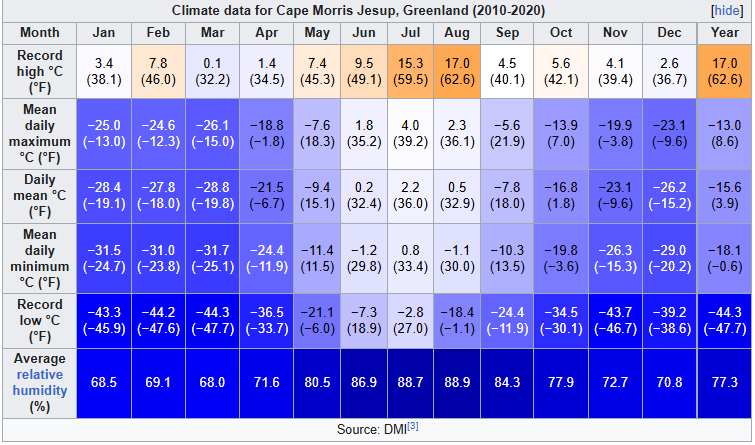
On July 12, 2025, Kap Morris Jesup, located in Northern Greenland and known as one of the northernmost points of land on Earth, recorded a remarkably warm temperature of +12.6°C. This temperature is strikingly close—just 2.7°C below the all-time July high recorded at this extreme Arctic location, emphasizing the significant warming trends affecting even the coldest and most remote parts of the planet.
Kap Morris Jesup, situated above 83 degrees north latitude, is renowned for its harsh polar climate, where summer temperatures generally remain low, often only rising slightly above freezing. A reading above 12°C is exceptionally warm for this region and signals a substantial departure from typical conditions, highlighting the rapid warming of the high Arctic.
This near-record temperature is a vivid illustration of Arctic amplification, the process by which the Arctic warms at several times the rate of the global average. The loss of sea ice, changes in atmospheric circulation, and feedback mechanisms contribute to such extreme warmth in polar areas.
Such elevated temperatures in Northern Greenland can accelerate surface melting of snow and ice, impacting the local environment and contributing to the broader decline of the Greenland Ice Sheet. Even minor increases in temperature at these latitudes can affect the stability of ice and permafrost, with global implications such as sea-level rise.
The event at Kap Morris Jesup is part of a pattern of unusually warm conditions observed across the Arctic during summer 2025, reflecting the ongoing challenges posed by climate change to polar regions. Monitoring these temperature extremes is critical for understanding the pace and consequences of warming in these fragile environments.

Source: https://en.wikipedia.org/wiki/Cape_Morris_Jesup

Illustration picture: https://en.wikipedia.org/wiki/Cape_Morris_Jesup#/media/File:Cape_Morris_Jesup_1900.jpg


























